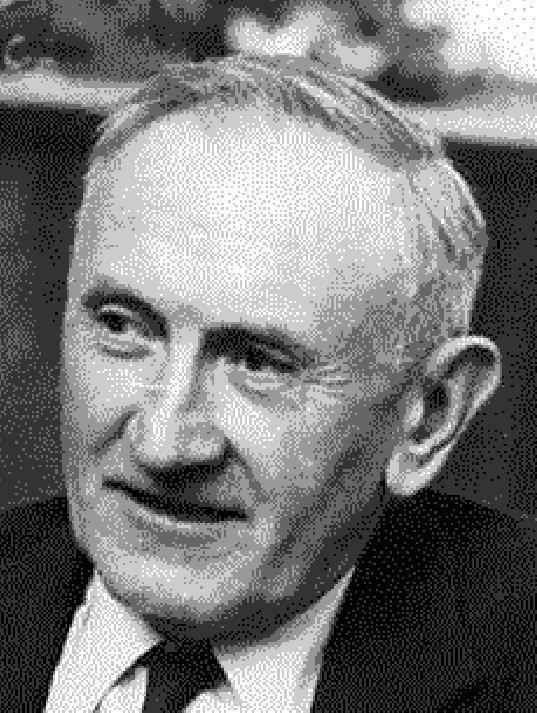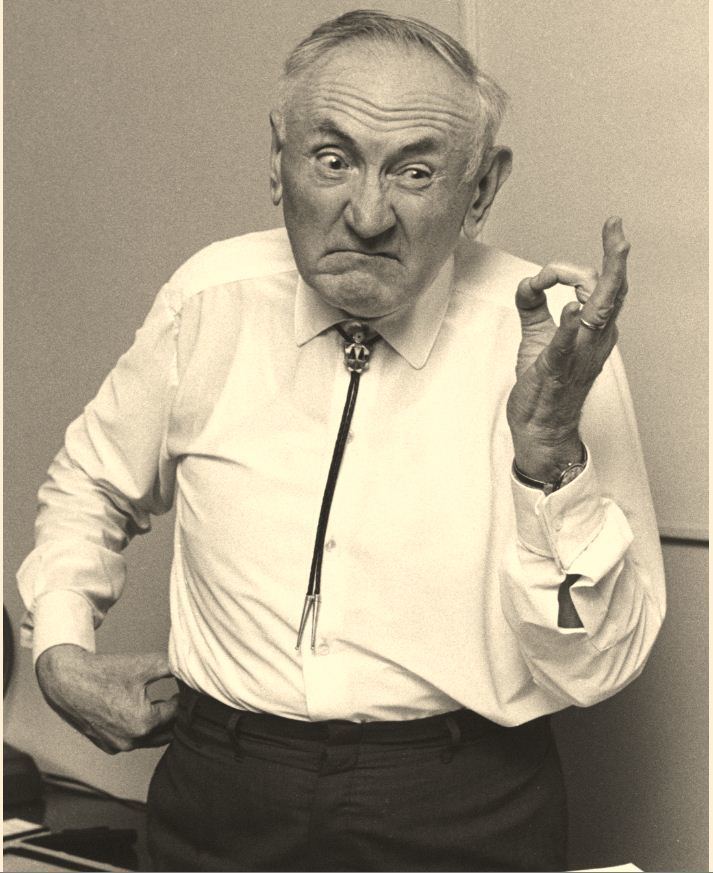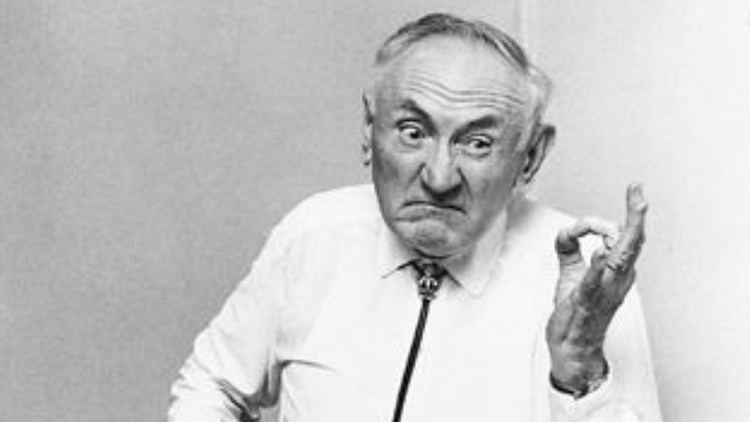Role Astronomer Education ETH Zurich | Alma mater ETH Zurich Name Fritz Zwicky | |
 | ||
Known for Dark Matter, Supernovae, Galaxies, Neutron stars Books Discovery, Invention, Research, Morphological Astronomy Similar People Walter Baade, Robert Andrews Millikan, Albert George Wilson, Paul Scherrer, Peter Debye | ||
Residence United States of America | ||
Fritz zwicky the father of dark matter professor ian morison
Fritz Zwicky (February 14, 1898 – February 8, 1974) was a Swiss astronomer. He worked most of his life at the California Institute of Technology in the United States of America, where he made many important contributions in theoretical and observational astronomy. In 1933, Zwicky was the first to use the virial theorem to infer the existence of unseen dark matter, describing it as "dunkle Materie".
Contents
- Fritz zwicky the father of dark matter professor ian morison
- Astronomy Cast Ep 517 Fritz Zwicky and the Zwicky Transient Facility
- Biography
- Scientific work
- Ionic crystals and electrolytes
- Supernovae and neutron stars
- Standard candles
- Gravitational lenses
- Dark matter
- Tired light
- Morphological analysis
- Catalog of Galaxies and Clusters
- Guns and goblins
- Humanitarian
- Honors
- Publications
- References

When researchers talk about neutron stars, dark matter, and gravitational lenses, they all start the same way: "Zwicky noticed this problem in the 1930s. Back then, nobody listened . . ."

Astronomy Cast Ep. 517: Fritz Zwicky and the Zwicky Transient Facility
Biography

Fritz Zwicky was born in Varna, Bulgaria, to a Swiss father. His father, Fridolin (b. 1868), was a prominent industrialist in the Bulgarian city and also served as ambassador of Norway in Varna (1908–1933). The Zwicky House in Varna was designed and built by Fridolin Zwicky. Fritz's mother, Franziska Vrcek (b. 1871), was an ethnic Czech of the Austro-Hungarian Empire. Fritz was the oldest of the Zwicky family's three children: he had a younger brother named Rudolf and a sister called Leonie. Fritz's mother died in Varna in 1927 and his father Fridolin remained in Bulgaria until 1945, when he returned to Switzerland. His sister Leonie married a Bulgarian from Varna and spent her entire life in the city.

In 1904, at the age of six, Fritz was sent to his grandparents in the family's ancestral canton in Glarus, Switzerland, to study commerce. His interests shifted to math and physics and he received an advanced education in mathematics and experimental physics at the Swiss Federal Institute of Technology, located in Zurich, Switzerland. In 1925, he emigrated to the United States to work with Robert Millikan at California Institute of Technology (Caltech) with an office down the hall from Robert Oppenheimer after receiving the "international fellowship from the Rockefeller Foundation."
He was responsible for positing numerous cosmological theories that have a profound impact on the understanding of our universe today. He was the first to coin the term "supernova" during his fostering the concept of neutron stars. Zwicky was a lone wolf and did all of his own mathematical work. He intended to write an autobiography titled: "Operation Lone Wolf." It would be five years later when Oppenheimer would publish his landmark paper announcing "neutron stars". Fritz was appointed Professor of Astronomy at Caltech in 1942 and also worked as a research director/consultant for Aerojet Engineering Corporation (1943–1961) and staff member of Mount Wilson Observatory and Palomar Observatory for most of his career. He developed some of the earliest jet engines and holds over 50 patents, many in jet propulsion, and is the inventor of the Underwater Jet (TIME March 14, 1949), the Two Piece Jet Thrust Motor and Inverted Hydro Pulse.
In April 1932, Fritz Zwicky married Dorothy Vernon Gates, a member of a prominent local family and a daughter of Senator Egbert Gates. Her money was instrumental in the funding of the Palomar Observatory during the Great Depression. Nicholas Roosevelt, cousin of President Theodore Roosevelt, was his brother-in-law by marriage to Tirzah Gates. Zwicky and Dorothy divorced amicably in 1941. In 1947 Zwicky was married in Switzerland to Anna Margaritha Zurcher and they had three daughters, Margrit, Franziska, and Barbarina. The Zwicky Museum at the Landesbibliothek, Glarus, houses many of his papers and scientific works, and the Fritz Zwicky Stiftung (Foundation) in Switzerland carries on his ideas relating to "Morphological analysis". Zwicky died in Pasadena on February 8, 1974, and was buried in Mollis, Switzerland.
Zwicky was an atheist.
He is remembered as both a genius and a curmudgeon. One of his favorite insults was to refer to people he did not approve of as "spherical bastards", because, he explained, they were bastards no matter which way you looked at them.
A recent biography in English was published by the Fritz Zwicky Foundation: Alfred Stockli & Roland Muller: Fritz Zwicky – An Extraordinary Astrophysicist. Cambridge Scientific Publishers, Cambridge, 2011. A review of the book is available from Acta Morphologica Generalis.
Scientific work
Fritz Zwicky was a prolific scientist and made important contributions in many areas of astronomy.
Ionic crystals and electrolytes
His first scientific contributions pertained to ionic crystals and electrolytes.
Supernovae and neutron stars
Together with colleague Walter Baade, Zwicky pioneered and promoted the use of the first Schmidt telescopes used in a mountain-top observatory in 1935. He hand-carried the Schmidt lens from Germany, which had been polished by the optician, Bernard Schmidt. In 1934 he and Baade coined the term "supernova" and hypothesized that supernovae were the transition of normal stars into neutron stars, as well as the origin of cosmic rays. This was an opinion contributed to determining the size and age of the universe subsequently.
In support of this hypothesis, Zwicky started looking for supernovae, and found a total of 120 by himself (and one more, SN 1963J, in concert with Paul Wild) over 52 years (SN 1921B through SN 1973K), a record which stood until 2009 when passed by Tom Boles.
Standard candles
In 1938, Zwicky's colleague Walter Baade proposed using supernovae as standard candles to estimate distances in deep space. Because light curves of many type-Ia supernovae show a common peak luminosity, they establish a cosmological distance scale by a well known intrinsic brightness.
Distant Type Ia supernovae show a nonlinear Hubble relationship, which scientists have explained in terms of an acceleration in the expansion rate for the universe.
Gravitational lenses
In 1937, Zwicky posited that galaxy clusters could act as gravitational lenses by the previously discovered Einstein effect. It was not until 1979 that this effect was confirmed by observation of the so-called "Twin Quasar" Q0957+561.
Dark matter
While examining the Coma galaxy cluster in 1933, Zwicky was the first to use the virial theorem to infer the existence of unseen matter, which he referred to as dunkle Materie 'dark matter'. He calculated the gravitational mass of the galaxies within the cluster and obtained a value at least 400 times greater than expected from their luminosity, which means that most of the matter must be dark. The same calculation today shows a smaller factor, based on greater values for the mass of luminous material; but it is still clear that the great majority of matter was correctly inferred to be dark.
Tired light
When Edwin Hubble discovered a somewhat linear relationship between the distance to a galaxy and its redshift expressed as a velocity, Zwicky immediately pointed out that the correlation between the calculated distances of galaxies and their redshifts had a discrepancy too large to fit in the distance's error margins. He proposed that the reddening effect was not due to motions of the galaxy, but to an unknown phenomenon that caused photons to lose energy as they traveled through space. He considered the most likely candidate process to be a drag effect in which photons transfer momentum to surrounding masses through gravitational interactions; and proposed that an attempt be made to put this effect on a sound theoretical footing with general relativity. He also considered and rejected explanations involving interactions with free electrons, or the expansion of space.
Zwicky was skeptical of the expansion of space in 1929, because the rates measured at that time seemed too large. It was not until 1956 that Walter Baade corrected the distance scale based on Cepheid variable stars, and ushered in the first accurate measures of the expansion rate. Cosmological redshift is now conventionally understood to be a consequence of the expansion of space; a feature of Big Bang cosmology.
Morphological analysis
Zwicky developed a generalised form of morphological analysis, which is a method for systematically structuring and investigating the total set of relationships contained in multi-dimensional, usually non-quantifiable, problem complexes. He wrote a book on the subject in 1969, and claimed that he made many of his discoveries using this method.
Catalog of Galaxies and Clusters
Zwicky devoted considerable time to the search for galaxies and the production of catalogs. From 1961 to 1968 he and his colleagues published a comprehensive six volume Catalogue of galaxies and of clusters of galaxies. They were all published in Pasadena, by the California Institute of Technology.
- Zwicky, F.; Herzog, E.; Wild, P. (1961), Catalogue of Galaxies and of Clusters of Galaxies 1, California Institute of Technology, Bibcode:1961cgcg.book.....Z
- Zwicky, F.; Herzog, E.; Wild, P. (1963), Catalogue of Galaxies and of Clusters of Galaxies 2, California Institute of Technology, Bibcode:1963cgcg.book.....Z
- Zwicky, F.; Herzog, E.; Wild, P. (1966), Catalogue of Galaxies and of Clusters of Galaxies 3, California Institute of Technology, Bibcode:1966cgcg.book.....Z
- Zwicky, F.; Herzog, E., Catalogue of Galaxies and of Clusters of Galaxies 4, California Institute of Technology
- Zwicky, F.; Karpowicz, M.; Kowal, C.T. (1965), Catalogue of Galaxies and of Clusters of Galaxies 5, California Institute of Technology, Bibcode:1965cgcg.book.....Z
- Zwicky, F.; Kowal, C.T. (1968), Catalogue of Galaxies and of Clusters of Galaxies 6, California Institute of Technology, Bibcode:1968cgcg.bookR....Z
Galaxies in the original catalog are called Zwicky galaxies, and the catalog is still maintained and updated today. Zwicky with his wife Margaritha also produced an important catalog of compact galaxies, sometimes called simply The Red Book.
Zwicky, F.; Zwicky, M.A. (1971), "Catalogue of selected compact galaxies and of post-eruptive galaxies", Guemligen: Zwicky, Bibcode:1971cscg.book.....ZGuns and goblins
Zwicky was an original thinker, and his contemporaries frequently had no way of knowing which of his ideas would work out and which would not. In a retrospective look at Zwicky's life and work, Stephen Maurer said:
When researchers talk about neutron stars, dark matter, and gravitational lenses, they all start the same way: "Zwicky noticed this problem in the 1930s. Back then, nobody listened . . ."
He is celebrated for the discovery of neutron stars. He also went on to consider nuclear goblins, which he proposed as "a body of nuclear density ... only stable under sufficient external pressure within a massive and dense star". He considered that goblins could move within a star, and explode violently as they reach less dense regions towards the star's surface, and serve to explain eruptive phenomena, such as flare stars. This idea has never caught on.
An anecdote often told of Zwicky concerns an informal experiment to see if he could reduce problems with turbulence hindering an observation session one night at Mount Wilson observatory. He told his assistant to fire a gun out through the telescope slit, in the hope it would help to smooth out the turbulence. No effect was noticed, but the event shows the kind of lateral thinking for which Zwicky was famous.
He was also very proud of his work in producing the first artificial meteors. He placed explosive charges in the nose cone of a V2 rocket, to be detonated at high altitude and fire high velocity pellets of metal through the atmosphere. The first attempts appeared to be failures, and Zwicky sought to try again with the Aerobee rocket. His requests were denied, until the Soviet Union launched Sputnik 1. Twelve days later, on October 16, 1957, Zwicky launched his experiment on the Aerobee, and successfully fired pellets visible from the Mount Palomar observatory. It is thought that one of these pellets may have escaped the gravitational pull of the Earth and become the first object launched into a solar orbit.
Zwicky also considered the possibility of rearranging the universe to our own liking. In a lecture in 1948 he spoke of changing planets, or relocating them within the solar system. In the 1960s he even considered how the whole solar system might be moved like a giant spaceship to travel to other stars. He considered this might be achieved by firing pellets into the Sun to produce asymmetrical fusion explosions, and by this means he thought that the star Alpha Centauri might be reached within 2500 years.
Humanitarian
Zwicky was a generous humanitarian with a great concern for wider society. These two sides of his nature came together in the aftermath of the Second World War, when Zwicky worked hard to collect tons of books on astronomy and other topics, and shipped them to war-ravaged scientific libraries in Europe and Asia.
He also had a longstanding involvement with the charitable Pestalozzi Foundation of America, supporting orphanages. Zwicky received their gold medal in 1955, in recognition of his services.
Zwicky loved the mountains, and was an accomplished alpine climber.
He was critical of political posturing by all sides in the Middle East, and of the use of nuclear weapons in World War II. He considered that hope for the world lay with free people of good will who work together as needed, without institutions or permanent organizations.
Honors
Publications
Zwicky produced hundreds of publications over a long career, covering a great breadth of topics. This brief selection, with comments, gives a taste of his work.
